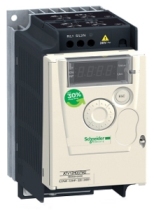Frequency Converters: Purpose and Applications
Frequency converters are devices designed to change the frequency of the grid alternating current from 50 (60) Hz to any specified value in the range of 1 – 800 Hz. By forming the output pulse voltage over a wide frequency range, these devices allow for smooth control of the shaft speed, output power, torque, and other parameters.
Application Area
Frequency converters have a wide range of applications, including:
- conveyor and lifting equipment
- ventilation systems
- centrifugal pumps
- cleaning systems
- metalworking
- automated control systems
The use of converters significantly reduces maintenance costs for drive mechanisms and electric motors, increases their reliability and durability, and saves electricity. Connecting a frequency converter to an electric motor typically pays off quickly and subsequently brings profit. In light of the continuous rise in electricity prices, the benefits of using a frequency converter become evident.

Choosing a Frequency Converter
When choosing a frequency converter, it is important to consider a number of factors, such as:
- type of mechanism it is intended for
- operating voltage of the power grid
- load characteristics
- power of the electric motor
- frequency adjustment range
There are single-phase (220 V) and three-phase (380 V) converters. It is important to note that connecting a single-phase frequency converter to a three-phase electric motor using a “star” scheme may lead to power loss; it is better to use a “triangle” scheme.
Main Manufacturers of Frequency Converters
The market features various models of frequency converters from well-known manufacturers such as:
- ABB
- Allen-Bradley
- AuCom
- Control Techniques
- Danfoss
- Parker
- Siemens
- Toshiba
In particular, the products of the Danish company Danfoss are highly popular and widely used in refrigeration equipment, industrial automation, and heating and ventilation systems. All models of frequency converters from this manufacturer come equipped with a built-in filter that smooths the intermediate circuit current.
Frequency converters from Siemens (Germany) have also proven themselves well. The SINAMICS series sets standards for technical solutions for energy recovery installations, while the MICROMASTER series is continuously improved, maintaining a high level of quality in its converters.